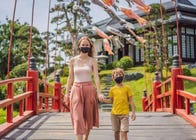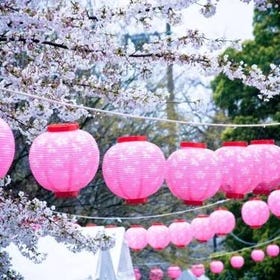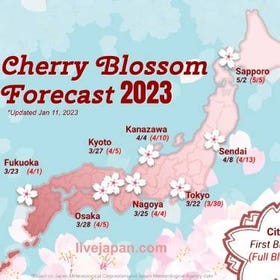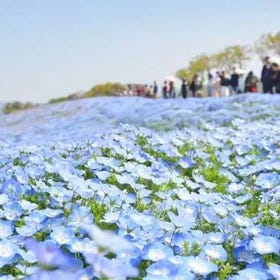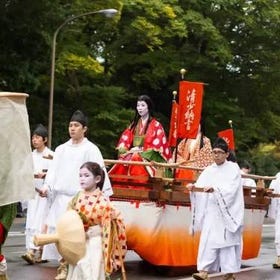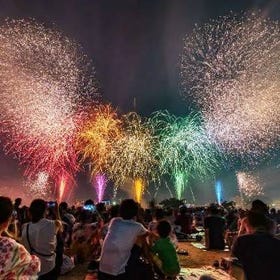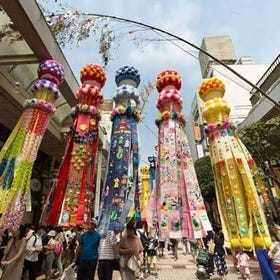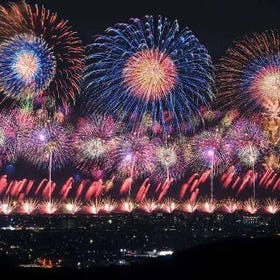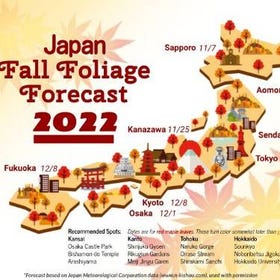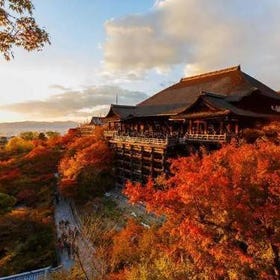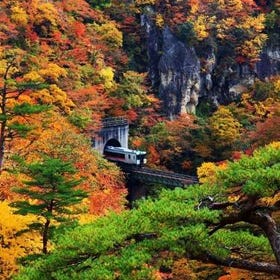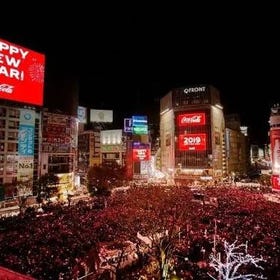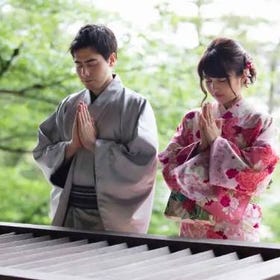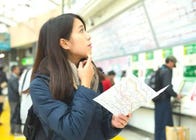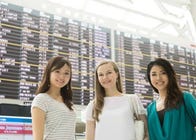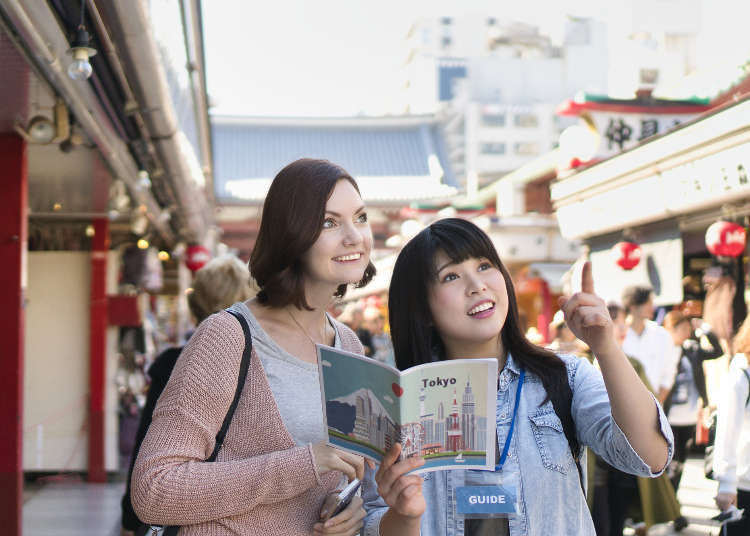
After over two years of restrictions were imposed on international tourists traveling into Japan, officials finally announced the country’s reopening on October 11, 2022. Having been crowned the best tourist destination in the world in the Travel and Tourism Development Index 2021, Japan is potentially one of the most popular post-Covid travel destinations.
To better understand these global dynamics, LIVE JAPAN conducted an online survey regarding our readers’ future travel plans and what questions they currently have about traveling in Japan post-pandemic.
Based on the answers from our respondents, while there are 26% who are planning a visit after May 2023 or have not decided on a date yet, around 74% are planning to visit Japan before May 2023.
With a huge influx of international tourists expected to visit Japan by May 2023, here is the latest information on Japan travel with your questions answered, essential to plan your dream trip amidst the new era of travel.
Main image: PIXTA
- Table of Contents
Preparing for your trip
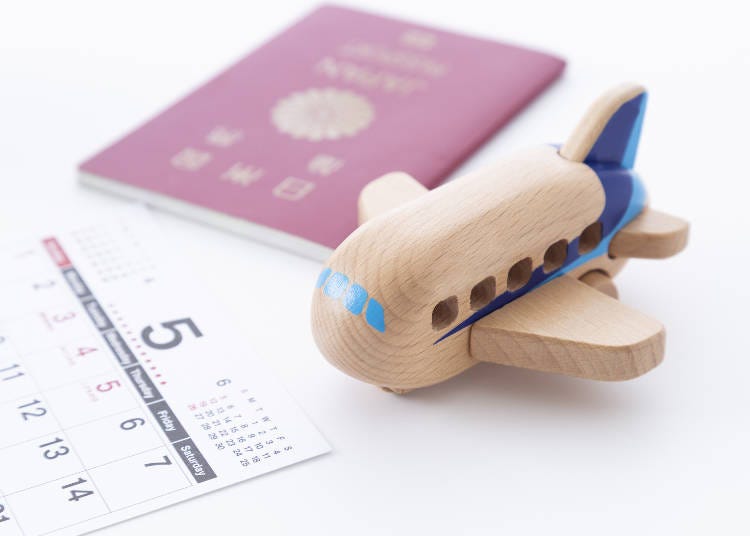
Q. When is the busy season?
A. Each season in Japan has different charms and attracts many tourists all year round. However, based on past data figures reported by JNTO for international visitors arriving in Japan, April and July are some of the most popular months.
Meanwhile, September is the least busy period for international visitors. If you want to avoid crowds, this time of the year may be a good option for you to consider.
Below is a simple breakdown of what crowds are like in each season and what factors contribute to it.
Spring: The number of tourists reaches its peak, predominantly due to the world-famous cherry blossoms in bloom. Many popular tourist sites tend to be packed with people, especially when the sakura is Mankai—in full bloom. Japan’s major holiday, known as Golden Week, starts from late April to early May. This is the most popular time for locals to travel, so almost everything gets crowded this time of the year nationwide.
Summer: The rainy period in early summer keeps tourists away in many areas; after this period, it tends to become very hot and humid. However, once you reach the latter half of summer, people flock to the beach and enjoy the numerous summer festivals, like the Gion Matsuri (July), Tanabata (August), and Nebuta Matsuri (August). Also, a few national holidays and others, such as Obon and school summer holidays, occur in summer, contributing to large crowds across the country.
Autumn: In autumn, weather conditions are volatile, occasionally developing typhoons or hefty rain, making it somewhat less favorable for travel. However, as the beautiful colors of the autumn foliage prevail, the number of travelers rises. During Silver Week (a week with consecutive national holidays in September), places get relatively crowded with locals.
Winter: In regions such as Tohoku and Hokkaido, the number of tourists reaches its peak, as skiers and snowboarders head for the beautiful snow up north. Also, in the latter half of December, year-end holidays gradually kick off nationwide, so you will expect some local crowds until the holiday ends in early January.
Local holidays are a significant contributor to crowds as well. Thus it would be helpful for you to take note of these dates when planning your itinerary.
For more information, check the following articles:
During peak season, hotels and ryokans, airlines, and all other modes of transportation get booked out extremely quickly, especially in and around popular tourist sites. To avoid disappointments, plan ahead and lodge an early bird booking for your accommodation and transportation before they are all gone.
For some ideas on where to stay, here are some hotels located around some of Japan’s popular tourist destinations:
・Tokyo
・Kyoto
・Osaka
・Sapporo
Q. If you want to avoid these crowded areas, what alternative options do we have?
A. While many tourists from overseas beeline to major cities and stay near famous tourist destinations, some of the country’s remote regions may appeal to you more if you want to hide away from the hustle and bustle. In the adjacent prefectures of Tokyo, such as Kanagawa, Chiba, Saitama, or other nearby prefectures like Gunma and Shizuoka, you’ll find many hidden gems that are often less crowded.
Here are some ideas near Tokyo which make great alternative destinations;
Hayama (Kanagawa): Great destination for gorgeous beach scenery amidst the backdrop of Mt. Fuji.
Chichibu (Saitama): Great destination for spending some tranquil time amongst nature.
Shimoda (Shizuoka): Great destination for an onsen stay by the southern coast of the Izu Peninsula.
Minakami (Gunma): Great destination for enjoying the vibe of an authentic Japanese onsen tucked away deep in the mountains.
Q. What are the best things to see each season?
A. From the cherry blossoms in spring to Matsuri festivals in summer, fiery red foliage in autumn to powder snow in winter, each and every season in Japan resembles a whole new different facet, potentially attracting many travelers to visit all year round.
For some of the best things to see and do in each season, check out the following articles for events to add to your bucket list.
Spring
In spring, the vast area of Japan is greeted by landscapes bedazzled with beautiful colors of spring blooms, the most famous of all certainly being the cherry blossoms. While the flowering period of cherry blossoms is very short, many people gather at sakura festivals every year to admire the ethereal beauties.
Summer
In summer, you’ll find many traditional festivals known as Matsuri take over the local neighborhood. Matsuri has been considered an important part of Japanese culture, many of them associated with rituals of Obon.
Autumn:
After a sizzling summer, Japan is soon greeted to cooler weather in autumn, which brings in the gorgeous landscape of its autumn foliage. In Japan, many people enjoy ‘momijigari’, a peaceful stroll appreciating the colors of fall.
Winter:
As we approach the end of the year, winter in Japan starts to put on its festivities. Prior to Christmas, you’ll find glittering illuminations decorating the vast country, but once you pass Christmas and head for Oshogatsu (New Year), the authentic decorations take over the neighborhood.
Q. What is the weather like each season? What should I pack?
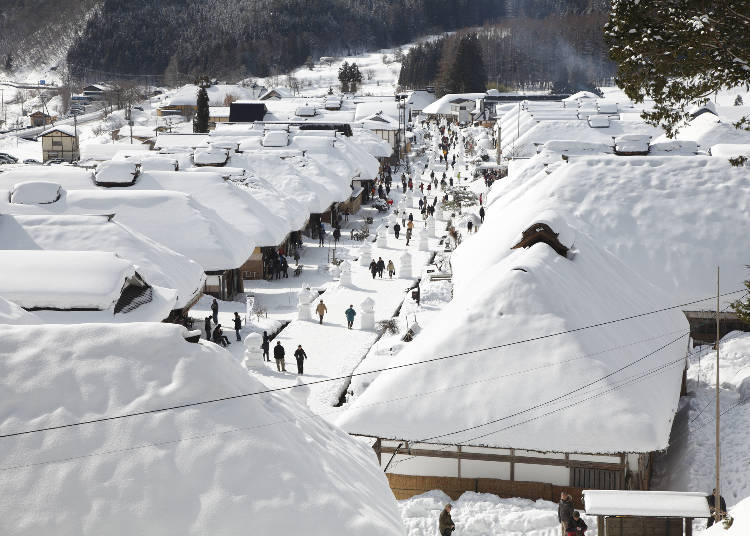
A. In Japan, each season sees different weather conditions, requiring you to prepare a little differently. To help you get an idea of what the weather is like in each season, here is a simple description of what you would expect, along with some tips on what you should have handy during your stay.
Spring (March-May): Weather is relatively warm and calm throughout the day with a pleasant high temperature of 19℃ (66℉) and low of 10℃ (51℉). However, as the cold of winter still lingers at night, it’s safe to pack some warm clothes.
Summer (June-August): June and July are rainy periods in most of Japan (excluding Hokkaido), and thus experience lots of rain and humidity. As the rain passes around August, you’ll find many days with blue skies and sizzling sun. Whether it’s rainy or sunny, the summer in Japan gets really hot, either with the humidity or sun. You will perspire a lot, so pack many light and breezy clothes to get changed in.
Autumn (September-November): Weather in autumn is volatile, mixed with hot and cold days. As the heat of summer lingers, especially in the early half of autumn, you should have both light and warm clothes handy. Sometimes typhoons develop during autumn, so some precautions are required. We have a handy guide here about preparing for typhoon season.
Winter (December-February): The chills of winter differ significantly across the region. During January, the average low for the south is 5℃ and Tokyo at 1℃ (around freezing). In northern areas like Tohoku and Hokkaido, the average lows reach -8℃ in January, producing heavy snow. As such, for those visiting the snowy region, pack decent winter boots, warm clothes, and other necessary protections. For those visiting major cities such as Tokyo, Osaka, Kyoto, pack simple jackets and scarves to keep you away from the cold.
For more information on what the weather is like in Japan, refer to below:
Q. What is the easiest way to get around Japan?
A. While there are various ways of getting around in Japan, with the country having a globally renowned railway system, it is fair to say that trains offer the most efficient way of transit. With special passes and tickets that offer unlimited rides for tourists, trains provide both convenience and value for users.
Here are some passes and tickets you should take note of for efficient transit around Japan.
For getting around all over Japan:
Japan Rail Pass (JR Pass)
Offered exclusively to overseas tourists, this pass grants unlimited travel on Japan Rail (JR) trains across a vast area of Japan (with few exceptions) for around one, two, or three weeks. The pass also provides unlimited access to the Tokyo Monorail, local JR buses, and the Miyajima ferry. If you plan on traveling long distances, this pass is a dream deal you don’t want to miss out on.
For travels around major cities (Tokyo and Osaka):
Tokyo Subway Ticket
This pass grants unlimited access to 13 varieties of routes with over 250 metro stops in Tokyo. Tokyo Subway Ticket 24, 48, or 72 offers 1-3 days of convenient travel around Tokyo. Ticket holders will be eligible for discounts and free gifts at some of Tokyo’s popular tourist attractions.
Osaka Amazing Pass
This pass provides you 1 or 2 days of unlimited access to the Osaka Metro, tramway, and bus. Ticket holders are also granted free entry to many of Osaka’s famous attractions, including the Umeda Sky Building and Osaka Aqua Bus.
For day trips from Tokyo:
JR TOKYO Wide Pass
Offered exclusively to non-Japanese passport holders, this pass is suited for those who wish to base in Tokyo and do some day trips around its surroundings. The pass grants 3 days of unlimited travel on JR East Trains in designated areas of the Kanto region, along with some parts of Nagano, Niigata, Yamanashi, and Shizuoka prefectures. It also gives access to some non-JR trains, providing better accessibility to popular tourist destinations such as Mt. Fuji and Nikko.
For travels around the countryside:
JR EAST PASS Nagano, Niigata area or Tohoku area
Offered exclusively to non-Japanese passport holders, these passes are perfect for those who wish to travel to the Tohoku region or areas around Nagano and Niigata. It grants 5 days of unlimited access to JR East trains and JR buses operating in designated areas. Unlimited access for some non-JR lines also offers access to popular tourist destinations in the countryside, including Nikko and the Izu Peninsula. For those who wish to explore Shinshu (Nagano, Matsumoto, and Hakuba), the JR EAST PASS (Nagano) is recommended for you. Meanwhile, if you wish to visit further north, such as Yamagata, Akita, or Aomori prefectures, the JR EAST PASS (Tohoku area) is a good choice.
JR EAST-SOUTH HOKKAIDO RAIL PASS
If you are looking to travel both the Tohoku and Hokkaido region, this pass offers overseas tourists (temporary visitor status) unlimited access to JR East trains in Kanto, Tohoku and JR Hokkaido trains in southern Hokkaido for 6 consecutive days. The pass also provides access to the Tokyo Monorail, some non-JR trains, and local buses.
For other modes of transportation to consider:
・Rent a car and drive around the country. You can learn more about renting a car in Japan here or even book one here.
・Travel by air via a domestic flight. See this page for more on tickets.
・Travel on highway buses and night buses for cheaper travel options (like the $20 bus from Tokyo to Osaka).
For more information about transportation in Japan:
Entry to Japan

Q. What are the required airport procedures to enter the country and what can I do to make it go smoothly?
A. Although some steps may vary depending on the airport, the general procedure you’ll take after you get off the plane is as follows:
・Medical inspection at the quarantine station
・Immigration
・Claiming your bag
・Inspection at the plant and animal quarantine station
・Customs
・Head to the arrival lobby
For your entry procedure to go smoothly, make sure to pre-register for Visit Japan Web; a digital service that enables you to complete your immigration procedure and customs declarations online. The new Fast Track feature also allows users to complete certain quarantine procedures in advance (e.g. registering required documents, including a valid vaccination certificate, Covid-19 Negative Test Result Certificate issued 72 hours prior to departure, and questionnaires).
While there are new services to help you achieve some shortcuts, the most important thing of all is for you to be aware of the latest travel requirements for your country and regularly check for updates from official information.
Q. Do I need to be vaccinated?
A.Vaccination is not a prerequisite for all entrants to Japan. Those who do not hold a valid vaccination certificate must submit to the quarantine center a negative Covid-19 test result certificate issued 72 hours before departure from a medical institution. On the other hand, those with a valid vaccination certificate showing they’ve received three doses of a vaccine listed on the Emergency Use List released by the WHO can enter Japan without a pre-departure inspection certificate, inspection upon arrival, or waiting after entry.
Q. What if you are vaccinated but the person traveling with me is not?
A.As stated above, vaccination is not a prerequisite for entrants to Japan. However, as with any other travelers who do not hold a valid vaccination certificate, they must respectively follow the set quarantine procedures upon entry.
Q. Do kids / babies need to be vaccinated?
A. People under the age of 18 do not necessarily need to hold a valid vaccination certificate, as long as their parents or their accompanying parental guardian submit their valid vaccination certificate on their behalf.
If in case the parents or guardians do not hold a valid vaccination certificate and are planning on entering Japan with a valid Negative Test Result Certificate, children under the age of 6 will be exempted from quarantine (although it is recommended that all children hold a valid Negative Certificate). Those over the age of 6 are required to undergo the same quarantine procedure as adults and thus are requested to present their own valid Negative Test Result Certificate respectively at the quarantine center.
A child’s exemption on submitting a valid vaccination certificate or Negative Test Result Certificate is only applied to those traveling with their parents or a guardian in charge. Thus, if the child is traveling solo, they’ll need to follow the quarantine requirements regardless of their age.
For any further information on vaccination, see the Visit Japan Web service and our article below.
Q. What countries need a visa to enter Japan?
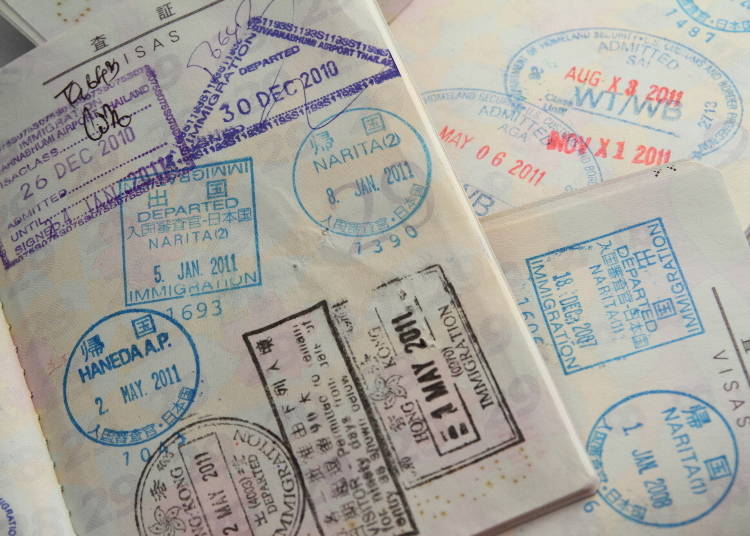
A.As of October 11, 2022, the Visa (Short-Term Stay) exemption is arranged for 68 countries and regions. (*Conditions apply for some countries, refer to the Ministry of Foreign Affairs of Japan website for more details).
For entrants who are entering from countries (or people who do not meet the required conditions) outside the list, they will need to apply for a visa prior to entry.
Major countries that require a visa: The Philippines, Vietnam, countries within the CIS, and more.
Q. Are there many flights to Japan right now?
A.While it depends on the country, since Japan reopened to international tourists in October, many airline companies are increasing their flights to accommodate an increasing number of tourists. Since the reopening in October, the number of inbound tourists has increased by 2154.8% since October 2021. This figure is expected to continue to grow steadily.
To see if there’s a flight from your city, we recommend checking Skyscanner.
When you have confirmed a flight from your city, you can start searching for the best deal on flights to Japan. Using a search engine like Skyscanner, you can compare every online flight deal and find the cheapest airfares. If you already have specific dates in mind, Skyscanner’s Price Alert function notifies you whenever fares go up or down, so you will not miss out on your best deal. For details, check out the Price Alerts page on Skyscanner.com.
When in Japan
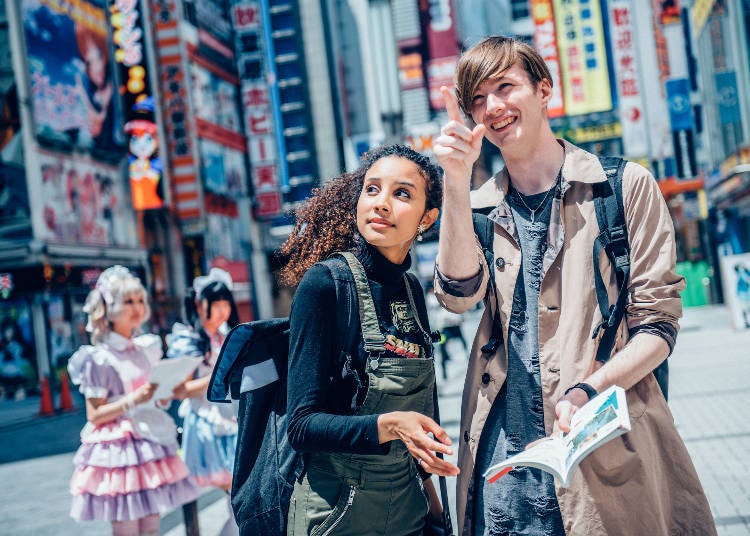
Q. What should I do if I get COVID during my stay?
A. If you think you’ve contracted COVID-19 while traveling in Japan, the first thing to do is contact the health center or the COVID-19 Consultation Center, which will advise on the treatment method and period.
If you test positive at a medical institution, they will contact the health center for you. Depending on your condition, they will either advise you to stay at your current accommodation and recuperate or transfer to another location.
On the other hand, if you test positive utilizing a store-bought kit, you’ll need to contact the local government health center or COVID-19 Consultation Center yourself and wait for their updates on the treatment method and period.
For more information about what to do and where to contact if you contract COVID-19 in Japan, see our article below.
Q. Do I have to wear a mask in Japan?
A. There are no strict mask mandates imposed in Japan. However, the government still recommends that people wear masks when indoors (unless there is enough social distance, limited or no conversation) or where they cannot keep a sufficient social distance (such as in a crowd or on public transit).
Also, in many restaurants, shopping centers, and other indoor facilities, you’ll find that they request a mask to be worn. The facilities mask policy is usually posted at the entrance, typically indicated with a picture of a mask.
For children under two years old, mask-wearing is not required in any circumstance. Those aged between two to six do not need to wear a mask regardless of social distance, but is recommended in some cases.
On a side note, it is worth noting that Japanese have worn masks naturally before the COVID-19 outbreak; thus, you may be surprised to see so many people continuing to wear masks in their daily lives, even if it’s not required.
Q. What is new or has changed since 2020?
Until recent years, Japan’s tourism industry experienced a long quiet moment without international travelers. Despite things, the industry sustained its momentum and continued to evolve, introducing many new attractions for us to look forward to in 2023 and beyond. Below are some recent openings for you to have on your radar:
・NAKED FLOWERS FOR YOU (Yurakucho, Tokyo): An experimental art exhibition comprising a series of digital floral gardens, opened in March 2022.
・Ghibli Park (Aichi Prefecture): A theme park based on the world of Japan’s famous animation studio Ghibli, opened in November 2022.
For upcoming attractions to open in 2023 and beyond:
・Tokyo Midtown Yaesu (Yaesu, Tokyo): A new shopping complex facing Tokyo station, set for its grand opening in March 2023. In September 2022, the 1st basement floor shops and bus terminal have opened ahead of the complex’s grand opening.
・Senkayaku Banrai (Toyosu, Tokyo): A new off-site facility in Toyosu with a reproduction of an Edo cityscape, aimed at promoting Japanese food culture. Set to open in September 2023.
・Tokyu Kabukicho Tower (Shinjuku, Tokyo): A new grand entertainment facility in Tokyo’s downtown, Kabukicho, set to open in April 2023.
Information in this article is accurate as of December 2022. Please check official sites for the latest information.
*Prices and options mentioned are subject to change.
*Unless stated otherwise, all prices include tax.
Recommended places for you
-
Goods

Yoshida Gennojo-Roho Kyoto Buddhist Altars
Gift Shops
Nijo Castle, Kyoto Imperial Palace
-

Jukuseiniku-to Namamottsuarera Nikubaru Italian Nikutaria Sannomiya
Izakaya
Kobe, Sannomiya, Kitano
-

ISHIDAYA Hanare
Yakiniku
Kobe, Sannomiya, Kitano
-

Kanzenkoshitsuyakinikutabehodai Gyugyu Paradise Sannomiya
Yakiniku
Kobe, Sannomiya, Kitano
-
Appealing

Rukku and Uohei
Izakaya
Sapporo / Chitose
-

Kambei Sannomiyahonten
Yakiniku
Kobe, Sannomiya, Kitano
-

Two Americans decide to hike Mt. Fuji before trails open, both need rescues on back-to-back days
-

Safe and Comfortable Summer in Japan! Sunscreen, Cooling Hacks & Other Child-Friendly Summer Essentials
by: Chehui Peh
-

This Japanese train station has its very own hot spring bathhouse, right on the platform【Photos】
-

Hachiji juppun mae – A Japanese phrase that even Japanese people can’t agree on the meaning of
-

Stay with Snorlax? Grand Hyatt Tokyo's Summer Pokémon Resort Experience Is the Ultimate Sleepover
-

Japanese hotel offering sports car touge tours, no Japanese-language ability required
-

Meiji Shrine (Meiji Jingu): Exploring the Sacred Sanctuary of Peace in Bustling Tokyo
-

COCONO Susukino: Day and Night Fun at Sapporo's Newest Landmark
-

Iizaka Onsen Guide: Japan's Gorgeous Hidden Hot Springs Town! (Access, Things to Do, Ryokan)
-

3 Best Hotels in Kobe, Japan with Amazing Views of Kobe Bay!
-
Ad

Explore Kyoto, Osaka, and Kobe with Ease: Hankyu 1day pass Strategy Guide
-

The Easiest One-Day Tokyo Itinerary: Exploring Tokyo on the Yamanote Line
- #best sushi japan
- #what to do in odaiba
- #what to bring to japan
- #new years in tokyo
- #best ramen japan
- #what to buy in ameyoko
- #japanese nail trends
- #things to do japan
- #onsen tattoo friendly tokyo
- #daiso
- #best coffee japan
- #best japanese soft drinks
- #best yakiniku japan
- #japanese fashion culture
- #japanese convenience store snacks














